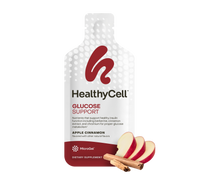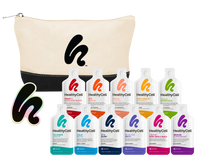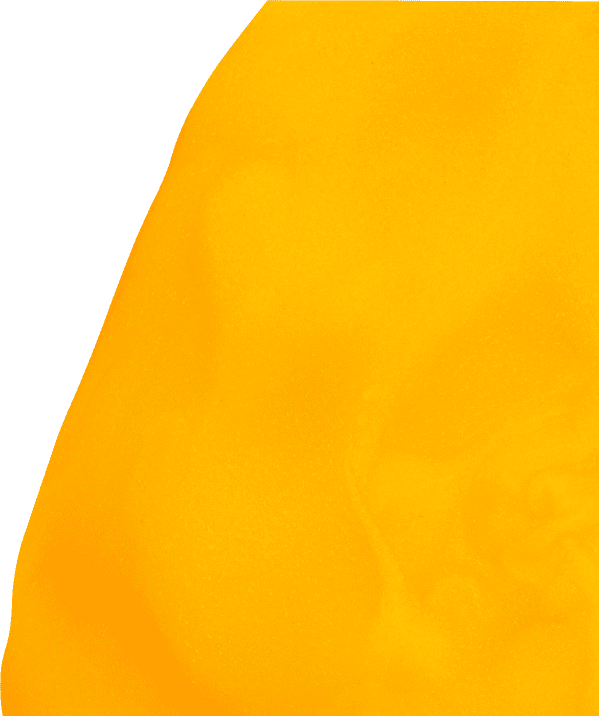Introduction: The Importance of Nail Health
Nail health is more than just aesthetics, it can also be an indicator of overall health, and various factors, including vitamin and mineral deficiencies. It is important to note that while deficiencies in vitamins and minerals can impact nail health, appearance, and strength, other factors such as hydration levels, exposure to harsh chemicals, underlying medical conditions, and genetic factors also play a role.
Understanding Nail Anatomy and Nail Health Issues
Understanding nail anatomy and nail health issues can help you better care for your nails and recognize any abnormalities or changes that may indicate underlying health issues.
- Nail Plate: The nail plate is the visible part of the nail, often referred to as the "nail." It is composed of layers of a hardened protein called keratin. The nail plate is what you typically see and paint when you apply nail polish. Damage to the nail plate can be due to nail trauma, a subungual hematoma (when blood gets trapped under the nail bed), nail biting, or nail picking.
- Nail Bed: The nail bed is the skin underneath the nail plate. It is rich in blood vessels, which give the nails their pinkish color. The nail bed provides nutrients to the nail matrix, contributing to nail growth. Damage to the nail bed can be due to nail trauma, blood clotting issues, pincer nail growth (over curvature of the nail plate), or chronic nail biting or picking.
- Nail Matrix (Nail Root): The nail matrix is the area at the base of the nail underneath the cuticle. It is responsible for producing new nail cells, which push older cells forward, leading to nail growth. Damage to the nail matrix can be due to nail trauma, vitamin deficiencies, medicines like chemotherapy, peripheral artery disease, eczema, psoriasis, subungual melanoma (a form of skin cancer), or nail fungus (onychomycosis).
- Cuticle: The cuticle is a thin layer of tissue that forms a protective seal at the base of the nail plate, covering the area where the nail emerges from the skin. It helps protect the nail matrix from infections and damage. Damage to the cuticle can be due to nail trauma, nail biting or picking, dry skin, exposure to cleaning agents or chemicals, infections around the nail (paronychia), or onychomycosis.
- Lunula: The lunula is the whitish, crescent-shaped area at the base of the nail plate. It represents the visible part of the nail matrix and is most prominent on the thumbnail. The lunula is where new nail cells are formed. Damage to the lunula can be due to nail trauma, nutritional deficiencies, or skin disorders.
- Nail Folds: Nail folds are the skin folds that surround and support the nail plate on three sides. They help keep the nail in place and protect the surrounding tissue from injury. Damage to the nail folds can be due to nail trauma, nail biting or picking, poorly managed hangnails, paronychia, or eczema.
- Hyponychium: The hyponychium is the thickened skin at the tip of the finger or toe beneath the free edge of the nail plate. It acts as a barrier, sealing the space between the nail plate and the tip, preventing debris and pathogens from entering. Damage to the hyponychium can be due to nail trauma, nail biting, nail gels, dermatitis, psoriasis, auto immune disorders, or onychomycosis.
Nails play a crucial role in performing everyday tasks such as picking up objects, typing, and grooming. Healthy nails contribute to a better grip and dexterity, making these activities easier and more efficient. Nails also serve as a protective barrier for the fingertips and toes, preventing injuries and allowing for fine motor activities. We don't need our nails to survive but think about how hard it would be to scratch an itch, separate pages in a book, or untie a knot if you had no nails.
Maintaining clean and well-trimmed nails is essential for good hygiene and promotes nail health. Proper nail hygiene prevents the buildup of dirt, bacteria, and fungi under the nails, reducing the risk of infections and unpleasant odors. Healthy nails are strong and less prone to fungal and bacterial infections, nail breaking or splitting, which in turn, provides better protection for the fingertips and toes. Understanding nail anatomy and nail health can help you catch potential health problems and signs of vitamin deficiency in nails. Changes in the nail bed, plate, cuticle, or folds, like variations in color, texture, and shape can sometimes indicate underlying health issues such as nutritional deficiencies, infections, or systemic diseases. Regularly examining your nails can help you spot changes or abnormalities in the nails, such as the appearance of dark lines or unusual pigmentation, which can sometimes be a sign of specific skin cancers. Taking care of your nails can enhance nail health and it is a form of self-care that can contribute to overall feelings of well-being, satisfaction with your appearance, and confidence.
Proper Nutrition to Maintain Healthy Nails
Nutrition plays a significant role in maintaining healthy nails and avoiding vitamin and mineral deficiencies. A well-balanced diet rich in essential nutrients is crucial for maintaining nail health.
- Protein: Nails are made of a protein called keratin, so consuming an adequate amount of protein is essential for promoting nail growth and strength. Good sources of protein include lean meats, poultry, fish, eggs, dairy products, legumes, nuts, and seeds.
- Starchy Vegetables and Whole Grains: Starchy vegetables, such as sweet potatoes, potatoes, and squashes, as well as whole grains, including oats, barley, rye, brown rice, quinoa, and whole wheat are good sources of biotin (vitamin B7), vitamin C, vitamin E, and zinc. Like quality protein foods, quinoa is also a good source of iron, which is crucial for transporting oxygen to nail matrix, lunula and nail bed.
- Healthy Fats: Omega-3 fatty acids are essential fats found in fatty fish (such as salmon, mackerel, and sardines), flaxseeds, chia seeds, walnuts, and soybeans. Monounsaturated fats and vitamin E, found in foods like avocados, olive oil, nuts, and seeds, provide antioxidant support maintaining the integrity of cell membranes, including those of nail cells. Healthy fats also help maintain moisture levels, preventing dry and brittle nails, nail folds and cuticles.
- Hydration: Hydration supports the structural integrity of the nails by keeping them well-hydrated and preventing them from becoming weak, dry, brittle, and chipping. Dry nails are more prone to splitting, cracking, and breaking, so ensuring proper hydration can help keep your nails flexible and resilient. Proper hydration supports the nail matrix and helps keep the cuticles moisturized and supple, which is important for protecting the nail bed, and promoting healthy nail growth. Hydrating throughout the day by drinking water and eating non-starchy vegetables can help prevent nail brittleness and maintain nail strength and integrity.
Nutrients Essential for Nail Health
Several key vitamins and minerals are necessary for strong nails, and are essential for nail growth, maintenance, and overall health. The following overview connects specific vitamin and mineral deficiencies while outlining how each specific nutrient contributes to nail health.
- Vitamin A: Vitamin A is important for cell growth and differentiation, including the cells that make up nails. A deficiency in vitamin A may lead to various nail changes, including koilonychia (spoon-shaped nails), pitting, and ridging nails, as well as dry, brittle nails that are prone to splitting, peeling and break easily. Ridging in nails can be vertical, often due to a dehydrated nail plate and inflammatory skin conditions such as psoriasis, lichen planus, as well as from hypothyroidism, rheumatoid arthritis, and amyloidosis. Research studies suggests that adequate levels of vitamin A may be important for maintaining normal nail structure and health (1).
- Biotin (Vitamin B7): Biotin is often associated with promoting healthy hair, skin, and nails. A deficiency in biotin can lead to brittle nails that are prone to breakage. A study published in the Journal of the American Academy of Dermatology in 1993 found that biotin supplementation significantly improved nail plate thickness and firmness in individuals with brittle nails (2).
- Vitamin B12: Vitamin B12 deficiency has been associated with various nail changes, including koilonychia, weak and brittle nails, yellow-colored nails, or hyperpigmented nail beds. Correcting the deficiency through supplementation or dietary changes can lead to improvements in nail health. Studies suggest that correcting vitamin B12 deficiency can improve nail health (3).
- Vitamin C: Vitamin C is essential for collagen synthesis, which provides structural support to the nail matrix, and helps maintain healthy nail growth. Collagen works with hyaluronic acid to make several proteins, including keratin, in the nail matrix. For this reason, a deficiency in vitamin C can lead to weak, brittle nails that may also be prone to splitting. Vitamin C plays a crucial role in keeping nails strong (4).
- Vitamin D: Vitamin D receptors (VDRs) are present in various cells throughout the body, including those in the nails clearly linking nail health with vitamin D. Vitamin D is well-known for its role in calcium absorption and bone health, including the bones in the fingers from which nails grow. Since the nail plate is made of keratin, which contains minerals like calcium, a deficiency in vitamin D has been linked to slow nail growth and brittle nails.
- Vitamin E: Vitamin E is known for its potent antioxidant and moisturizing properties that help protect cells in the nails. As an antioxidant, vitamin E protects nails from free radicals. By neutralizing free radicals, vitamin E can help prevent oxidative stress and damage to nail cells, leading to brittleness and poor growth. Like ceramides, vitamin E helps maintain the skin's natural barrier function, preventing moisture loss, keeping the nail cuticle, folds and hyponychium moisturized. Adequate moisture levels are important for maintaining flexible, healthy nails.
- Iron: Iron deficiency, often associated with anemia, can lead to koilonychia, and nails prone to ridging, brittleness, thinness which break easily. Koilonychia can also be related to malnutrition, blood loss, or malabsorption. People with iron deficiency anemia, will often see small white spots or streaks, known as white nails or leukonychia. Some will see a decrease in size or absence of the lunula. Studies show that the severity of such nail changes are directly correlated with the degree of iron deficiency, suggesting that correcting the deficiency could potentially improve nail health (5, 6).
- Zinc: Zinc is an essential mineral involved in various physiological processes, including cell growth, immune function, and wound healing. It plays a crucial role in maintaining the structural integrity and function of the nail plate, bed, matrix, cuticle and hyponychium. As with iron deficiency, zinc deficiencies can also cause leukonychia. Additionally, horizontal ridges on nails, called Beau’s lines, can be due to trauma, poor nail hygiene, zinc, or protein deficiencies. Studies show positive potential of zinc supplementation in treating nail abnormalities such as pitting, brittle nails, leukonychia, and Beau's lines often associated with diabetes, illness, or injury (7). Additional studies show that zinc supplementation led to improvements in nail plate thickness and reduced nail shape (8).
- Omega-3 Fatty Acids: While not strictly a vitamin, omega-3 fatty acids are essential for overall skin and nail health. Deficiency in omega-3 fatty acids can lead to brittle nails that may be prone to splitting and breaking. Recent studies found that omega-3 supplementation resulted in improvements in nail plate thickness, brittleness, and peeling (9).
Addressing Vitamin Deficiencies for Nail Health
Addressing vitamin deficiencies for nail health involves ensuring that you are getting an adequate intake of essential vitamins and minerals known to support overall nail health. Staying hydrated and incorporating a variety of nutrient-rich foods in your diet can ensure that you are getting a broad spectrum of vitamins and minerals.
Additionally, supplements can be used to complement or enhance the nutrients we obtain from our diet. Supplementation is an excellent way to ensure you are getting all the essential vitamins and minerals in spite of a poor diet, nutrient depleted soil, age related changes, poor health, reduced nutrient absorption, or increased nutrient needs due to stress, and environmental pollutants. The Healthycell Bioactive Multi contains a blend of ultra-absorbable essential vitamins, minerals, antioxidants, and other nutrients that can support overall health and well-being including, Biotin, Vitamin B12, Zinc, Vitamin C, E, and D3. These nutrients can help fill any gaps in your diet to prevent nutritional deficiencies. Taking the Healthycell Vibrant Hair, Skin and Nails supplement is a convenient way to get effective doses of Vitamin C, Biotin, Vitamin E, Peach Extract Ceramides, as well as super absorbent Collagen peptides and Hyaluronic acid to support nail growth and health from the inside out.
Pay attention to key signs of vitamin deficiency in nails, such as discoloration, ridges, or brittleness. If you notice significant changes, consult with a healthcare professional to rule out any underlying health issues. With the guidance of a healthcare professional, you can take proactive steps to improve nutritional deficiencies and your nail health. Maintaining overall health through regular exercise, adequate sleep, stress management, limiting alcohol and excess caffeine, and avoiding smoking can also contribute to your overall health and the health of your nails. Since individual responses to lifestyle changes, dietary and supplement interventions may vary, consulting with a healthcare professional is advisable for personalized recommendations. The sooner you treat any underlying health issues that might be disrupting with your nail health, the sooner they can grow healthier and stronger. Take the first step towards health, your nails - and your overall health - will thank you for it!
References
- (1) Singal A, Arora R., "Nail as a window of systemic diseases." Int J Trichology. 2011.
- (2) Colombo VE et al., "Treatment of brittle fingernails and onychoschizia with biotin: scanning electron microscopy." J Am Academy Dermatology. 1990.
- (3) Kumar S et al., "Cutaneous manifestations of vitamin B12 deficiency: A rare case report and review of literature." J Cutan Med Surg. 2016.
- (4) Guarrera M et al., "Nutritional factors and hair loss." Dermatol Pract Concept. 2017.
- (5) Gkouva C et al., "Nail involvement as a reflection of internal disease." J Eur Academy Dermatol Venereol. 2016.
- (6) Shayanmehr S et al., "Oral Iron Supplementation Effect on Efficacy of Treatment in Women with Iron Deficiency Anemia and Nail Changes." J Am Academy Dermatology. 2018.
- (7) Gupta M, Mahajan VK, Mehta KS, Chauhan PS., "Zinc and Skin Disorders: A Review." Nutrition in Clinical Practice. 2014.
- (8) Khoo SW et al., "A prospective randomized controlled trial comparing the efficacy of zinc sulfate to treat nail psoriasis compared with triamcinolone." Ann Dermatology. 2013.
- (9) Pilkington SM et al., "Randomized controlled trial of oral omega-3 PUFA in solar-simulated radiation-induced suppression of human cutaneous immune responses." J Cosmetology Dermatology. 2015.




